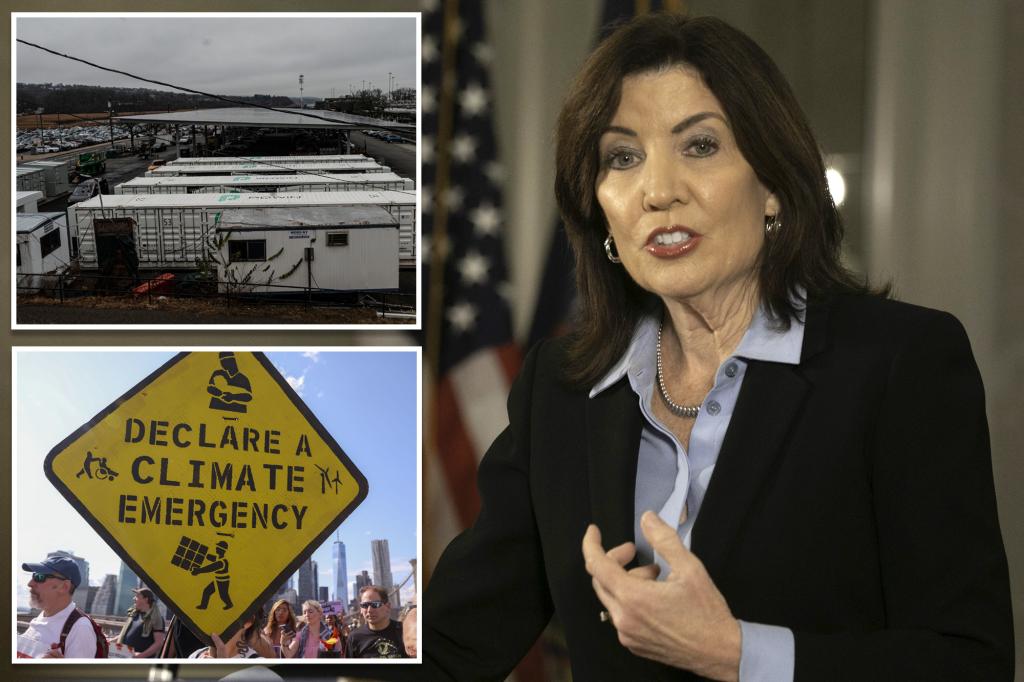The ambitious green energy agenda spearheaded by New York Governor Kathy Hochul is facing significant headwinds as communities across the state push back against the construction of large-scale battery storage facilities, crucial components in the transition to renewable energy sources like wind and solar. These Battery Energy Storage Systems (BESS) are designed to store surplus energy generated during peak production periods, ensuring a consistent power supply even when the sun isn’t shining or the wind isn’t blowing. However, growing safety concerns and a perceived lack of regulatory oversight are fueling resistance at the local level, threatening to derail the state’s ambitious climate goals.
The resistance is evident in diverse communities, from upstate towns to the boroughs of New York City. Staten Island Borough President Vito Fossella has been a vocal critic, calling for a moratorium on BESS facilities due to their proximity to residential areas and potential hazards. His concerns echo those of residents in other areas, who point to the potential for fires and the release of toxic substances. This apprehension is not unfounded, as evidenced by a recent fire at a massive lithium-ion battery storage facility in Monterey County, California, which necessitated the evacuation of thousands and revealed concerning levels of heavy metals in the surrounding soil. The incident served as a stark reminder of the potential risks associated with this technology and underscored the need for robust safety regulations and oversight.
The opposition is particularly striking in Duanesburg, the very town where Doreen Harris, the president and CEO of the New York State Energy Research and Development Authority (NYSERDA), resides. The town board recently voted to ban BESS facilities, citing concerns about public health and safety, particularly the potential strain on the town’s volunteer fire department and the lack of access to public water in some areas. This decision underscores the growing disconnect between the state’s top-down approach to green energy and the realities faced by local communities. The irony is not lost on observers, as the very individuals tasked with promoting the transition to renewable energy are facing resistance from their own constituents.
The pushback extends to other areas as well, including Westchester and Putnam counties, where a proposed 116-megawatt storage site has faced significant opposition. The town of Carmel in Putnam County has already banned lithium battery storage systems, highlighting the growing trend of local resistance. The situation is further complicated by the closure of the Indian Point nuclear plant in Buchanan, Westchester County, in 2020. While the plant was shut down due to public health and safety concerns, some residents now ironically view the proposed battery storage facility as a potentially more dangerous alternative. This sentiment reflects the complex and often contradictory nature of public opinion surrounding energy policy, where perceived risks and benefits can vary significantly depending on the specific technology and local context.
The mounting opposition underscores a fundamental challenge in the transition to renewable energy: balancing the need for large-scale energy storage solutions with the legitimate concerns of local communities. The California incident and the growing chorus of dissent in New York highlight the need for a more cautious and collaborative approach. Simply mandating the construction of BESS facilities without adequately addressing safety concerns and engaging with local communities is proving to be a counterproductive strategy. The lack of clear regulations and oversight, coupled with the potential for catastrophic incidents, is fueling public distrust and creating roadblocks for the very technologies intended to mitigate climate change.
The situation calls for a more nuanced and inclusive approach to energy policy. State officials need to engage in meaningful dialogue with local communities, address their concerns transparently, and ensure that safety regulations are robust and effectively enforced. The transition to renewable energy requires a collaborative effort, not a top-down mandate. Ignoring the legitimate concerns of local residents risks undermining public support for the very technologies that are essential for achieving a sustainable energy future. The current situation in New York serves as a cautionary tale, highlighting the importance of balancing ambitious climate goals with the practical realities and safety concerns of the communities most directly affected by these large-scale energy projects. The path to a green future must be paved with collaboration and transparency, not with mandates and disregard for local anxieties.

